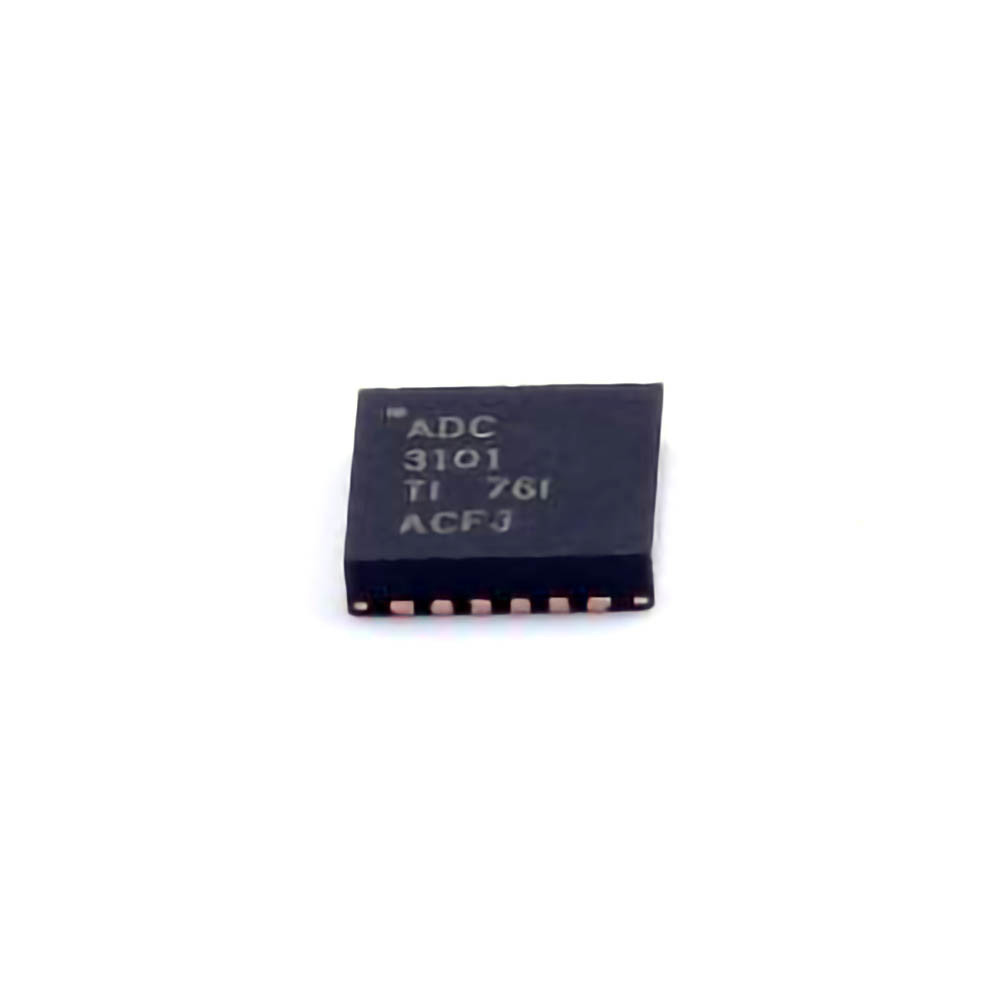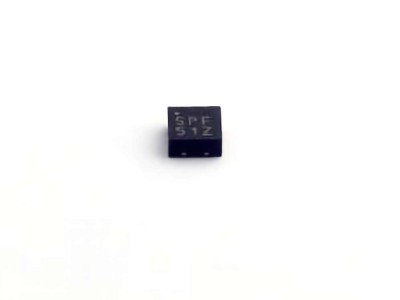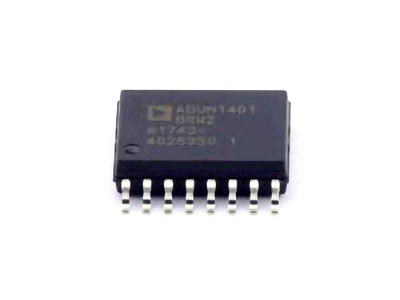
Understanding the TLV320ADC3101IRGER and Its Role in Portable Audio Device Design
In the world of portable audio devices, the pursuit of high-quality sound and energy-efficient performance often defines the success of a product. The integration of high-performance components, such as audio analog-to-digital converters (ADC), plays a pivotal role in achieving these objectives. One such component, the TLV320ADC3101IRGER, is a highly regarded audio ADC from Texas Instruments that offers a Power ful combination of audio fidelity, low power consumption, and compact size—making it a perfect choice for portable applications.
This first part of the article will focus on the key features of the TLV320ADC3101IRGER, its importance in portable audio device design, and the initial considerations that designers must account for when incorporating this device into their systems.
Key Features of the TLV320ADC3101IRGER
The TLV320ADC3101IRGER is a highly versatile, low-power audio ADC designed for high-performance audio capture. Here are some of its standout features:
High-Resolution Audio Conversion: The TLV320ADC3101IRGER offers 24-bit resolution and up to 96 kHz sampling rate, which is ideal for delivering high-fidelity audio in portable devices. This level of resolution ensures that every nuance of the audio signal is accurately captured and reproduced.
Low Power Consumption: Power efficiency is a crucial aspect of portable audio device design. With ultra-low power consumption, the TLV320ADC3101IRGER extends battery life, making it an ideal choice for handheld and mobile applications.
Integrated Microphone Bias and Digital filters : The ADC includes a built-in microphone bias, which simplifies the design by eliminating the need for an external biasing circuit. Additionally, it features integrated digital filters that help improve signal quality by reducing noise and distortion.
Small Form Factor: The compact package of the TLV320ADC3101IRGER makes it easy to integrate into space-constrained portable audio devices. This is especially important in modern portable devices, where maximizing internal space is a key challenge.
Flexible interface Options: The device offers multiple interface options, including I2S and PCM, which allow designers to choose the best interface for their specific application. This flexibility makes the ADC versatile and compatible with various processors and digital audio systems.
The Role of an Audio ADC in Portable Device Design
An audio ADC serves as the critical interface between the analog world of sound and the digital world of data processing. In portable audio devices, this means that the ADC is responsible for converting analog audio signals—such as those captured by microphones or other sound sources—into digital signals that can be processed by the device's internal digital signal processor ( DSP ) or microcontroller.
The TLV320ADC3101IRGER excels in this role by ensuring that the audio conversion process is both accurate and efficient. With features like high-resolution sampling and built-in noise reduction, this ADC guarantees that the sound captured by the device remains as true to the original source as possible, while also minimizing any artifacts that could degrade audio quality.
Considerations for Designing with the TLV320ADC3101IRGER
When designing a portable audio device that incorporates the TLV320ADC3101IRGER, there are several critical factors to consider to optimize both performance and power consumption. These considerations include:
Power Management : Portable devices, by nature, are often constrained by battery life. Maximizing power efficiency in the audio subsystem is essential for ensuring that the device can deliver long hours of operation. The TLV320ADC3101IRGER's low-power design is a major advantage here, but designers must also consider factors like sleep modes, Clock gating, and overall system power Management to get the best performance without draining the battery.
Microphone Selection and Biasing: The TLV320ADC3101IRGER includes an integrated microphone bias, simplifying the design by eliminating the need for an external bias circuit. However, choosing the right microphone to pair with this ADC is still crucial for achieving optimal performance. Designers should consider factors like microphone sensitivity, impedance, and compatibility with the bias voltage levels provided by the ADC.
Noise Reduction and Grounding: High-quality audio requires a clean signal path, which means minimizing noise and interference. The layout of the PCB and grounding techniques will have a significant impact on the overall audio performance. Special care must be taken when routing analog and digital traces to avoid cross-talk and ensure that the signal remains as clean as possible.
Sampling Rate and Resolution: The TLV320ADC3101IRGER supports 24-bit resolution at up to 96 kHz sampling rate, but choosing the optimal settings for your application depends on the desired audio quality and the available processing power. Higher sampling rates and bit depths require more processing and memory resources, so designers must strike a balance between audio quality and system performance.
Optimizing Audio Performance in Portable Devices
To ensure that your portable device delivers top-tier audio performance, it is crucial to pay attention to several key design practices:
Input Signal Conditioning: Proper input signal conditioning—such as pre-amplification and filtering—ensures that the audio signal fed into the ADC is as clean as possible. This can reduce distortion and improve the overall signal-to-noise ratio (SNR).
Clock Management: The TLV320ADC3101IRGER's performance is highly sensitive to the clock source used. An accurate, low-jitter clock is essential for maintaining synchronization and preventing phase distortion.
Post-Processing: Once the audio signal is digitized, DSP algorithms can be used for noise cancellation, dynamic range compression, and other audio enhancements. This is particularly important in portable devices where environmental noise is a concern.
In the next part of this article, we will dive deeper into the best practices for integrating the TLV320ADC3101IRGER in portable audio devices, including tips on PCB layout, power optimization, and other advanced considerations for improving overall performance.
Advanced Design Techniques for Integrating the TLV320ADC3101IRGER in Portable Audio Devices
In part one, we explored the key features and considerations for integrating the TLV320ADC3101IRGER audio ADC into portable audio devices. Now, in part two, we will delve into advanced design techniques to optimize performance, reduce power consumption, and ensure seamless integration in your portable audio applications. Whether you are designing a portable speaker, a wireless earbud, or any other compact audio device, these best practices will help you maximize the potential of this powerful ADC.
1. PCB Layout Best Practices for Audio Systems
When working with the TLV320ADC3101IRGER in portable devices, the layout of the printed circuit board (PCB) is critical for ensuring that the ADC performs optimally. The TLV320ADC3101IRGER is sensitive to noise and interference, so it’s essential to carefully consider the following layout techniques:
Separate Analog and Digital Grounds: The ADC has both analog and digital sections, and these should be grounded separately to prevent noise from the digital domain from contaminating the analog signal. Connect the grounds at a single point near the power supply to avoid ground loops.
Optimize Power Supply Decoupling: Use high-quality capacitor s to decouple the power supply lines close to the TLV320ADC3101IRGER. This helps minimize power supply noise, which can negatively impact the audio signal.
Minimize Trace Lengths for Analog Signals: Keep analog signal traces as short and direct as possible to reduce the risk of signal degradation and pick-up of electromagnetic interference ( EMI ). Use wide traces or differential routing for critical signals.
Shielding and Isolation: Use shielding to isolate sensitive analog circuits from noisy digital circuits and power supplies. This is especially important in portable audio devices, where space constraints often lead to tight integration between digital and analog components.
2. Power Management Techniques for Long Battery Life
One of the key advantages of the TLV320ADC3101IRGER is its low-power consumption, but it’s still crucial to implement effective power management strategies throughout the design. Here are a few techniques to extend battery life in portable audio devices:
Low-Power Modes: Leverage the TLV320ADC3101IRGER’s various low-power modes, such as the “shut down” mode when the device is idle. Switching to these modes when the device is not actively processing audio can save significant power.
Efficient Power Supply Design: Choose a power supply with high efficiency to minimize wasted energy. A well-designed DC-DC converter or low-dropout regulator (LDO) can provide the required voltage with minimal losses.
Smart Power Switching: Implement smart power switching techniques that dynamically adjust the power supply to different parts of the system based on their activity. For instance, when the audio processing unit is not in use, power to the TLV320ADC3101IRGER can be reduced or completely turned off.
3. Microphone Selection and Audio Input Optimization
Selecting the right microphone for your portable audio device is key to ensuring that the audio captured by the TLV320ADC3101IRGER is of the highest quality. When designing a system, keep the following considerations in mind:
Microphone Type: Choose between electret, MEMS, or other types of microphones depending on your design goals. MEMS microphones are often preferred for their small size and low power consumption, making them ideal for portable applications.
Microphone Sensitivity and Impedance: Ensure that the microphone’s sensitivity and impedance match the input requirements of the TLV320ADC3101IRGER. This will help maximize the signal quality and minimize distortion.
Noise Suppression: Incorporate noise suppression features, such as analog filters or digital algorithms, to reduce environmental noise that could degrade the audio quality in noisy settings.
4. Enhancing Audio Quality with Digital Processing
Once the audio has been digitized by the TLV320ADC3101IRGER, the next step is to enhance it using digital signal processing (DSP) techniques. This is especially important in portable devices where external noise and environmental factors can degrade the listening experience. Consider integrating the following features into your design:
Noise Cancellation: Use digital noise reduction algorithms to filter out unwanted background noise. This is particularly useful for portable microphones, where external sounds can easily interfere with the audio.
Equalization: Implement real-time equalizers to adjust the frequency response of the audio based on the environment or user preferences. This can improve the listening experience and make the audio sound more natural.
Dynamic Range Compression: For devices like portable speakers, dynamic range compression can be used to balance the loudness and prevent distortion during playback, especially at high volumes.
5. Testing and Validation of Audio Performance
Finally, once your design is complete, rigorous testing is crucial to ensure that the TLV320ADC3101IRGER and the overall system meet your performance requirements. Use tools such as spectrum analyzers, oscilloscopes, and audio analyzers to check for issues like distortion, noise, and signal integrity.
Ensure that the device functions as expected across a range of real-world conditions, including varying input signal levels and battery voltage fluctuations. Testing in different acoustic environments will help you fine-tune the system for optimal performance.
By following these best practices, designers can effectively harness the power of the TLV320ADC3101IRGER to create high-quality, energy-efficient portable audio devices that provide excellent user experiences. With careful attention to power management, PCB layout, microphone selection, and digital processing, the potential of this audio ADC can be fully realized in any portable application.
If you are looking for more information on commonly used Electronic Components Models or about Electronic Components Product Catalog datasheets, compile all purchasing and CAD information into one place.


